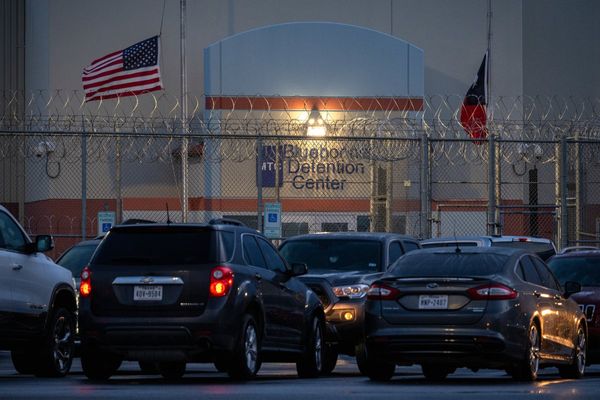
When the thorny subject of housing is raised, Anthony Albanese has a habit of turning to his past. “I grew up in social housing – I know how important a roof over your head is,” the prime minister said at a Future Australia Housing Fund event in September.
It’s an oft-repeated line that has begun to feel as exhausted as those who hear it. The reality is, despite Australia’s affluence, housing has become a less secure, less fair part of life, especially for people on low incomes.
Over the past months and years, we’ve watched in alarm as houses have grown chronically unaffordable. Guardian Australia wanted to get a sense of how deeply the housing crisis is reshaping the way people live, so we asked readers to tell us, and you did, with 800 answers to questions about how the housing crisis has affected your work, relationships, household, health and wellbeing. Almost every one of the 160 respondents described their despair and desperation as, at best, they tread water and, at worst, live in their cars.
Overwhelmingly, it’s the feeling of insecurity that hits hardest. As one reader expressed it: “What angers me is when our PM says he understands what it’s like to struggle because he grew up in public housing,” they said. But how is that a struggle? His mother lived in the same place for 65 years and never had to worry about being evicted. To me, that stability is the height of luxury.”
Today, renting or saving for a home in Australia feels so precarious that many people across the income spectrum are being forced to change the way they live. The housing crisis is reknitting the fabric of our cities and regions, our streets and workplaces, our playgrounds and our nightlife.
Adult children are moving in with their parents, older people are living in shared houses, big families are renting small apartments and commutes are getting longer. Many people cannot afford to have children and are working long hours to pay – sometimes up to 75% of their income – for the a roof over their head.
The tension people are feeling was clear in their responses: the word “stress” was mentioned more than 60 times. “Struggle”, “survival”, “anxiety” and “demoralising” were also common responses. Four people said they were suicidal.
People questioned the point of working and saving hard when the epitome of family and financial stability – home ownership – continued to slide further from reach? A full-time worker and single mother captured the mood of many renters: “I live in constant fear that I am going to be kicked out of our rental … I worry that I will end up living in my car one day.”
Baby boomers are often painted as villains in the housing crisis but many older people responded with startling stories of precarity, with pensioners and retirees exposed to the whims of the private rental market while living on dwindling incomes. They are a quiet cohort being battered by Australia’s record-breaking house prices and skyrocketing rental costs. Many are silenced by shame at a time of life when they feel they should be doing better.
But it was young professionals hoping to get a foot on the housing ladder who responded the loudest: their savings are paltry, they are feeling cost-of-living pressures acutely, their rent is eye-wateringly high and (if they couldn’t borrow from the bank of mum and dad) their only chance to save is to live with their parents well into their 30s – if they have that option. If they have children, they spend precious little time with them, instead working two jobs or commuting for hours.
Other readers told us they were forgoing medical care when they were sick and opting not to buy prescription medicine. Many people said they were skipping meals in an attempt to save money. Side hustles were common, with many people working evenings and at weekends in attempts to stay afloat. “I barely see my son,” one respondent said. “I’m lucky, in a way, that he’s old enough to largely take care of himself. I’m exhausted.”
Relationships have broken down because of the added pressure of rental costs. People have stayed in bad marriages because living separately costs too much. Others have decided not to start a family because of the cost of looking after children. And it wasn’t only elderly people who reported feeling isolated – young people, forced to move far from friends and family in the hunt for better value, have been left feeling disconnected.
You described neighbourhoods that have become “bougie” and characterless. Some suburbs had not improved alongside their rising price tags. “Honestly, Glenroy has always been a hellhole, it’s just an expensive hellhole now,” said Kieran in Victoria.
Many of you have moved multiple times in a few years. One renter in Victoria described having one housemate who slept in the lounge and another in the garden shed – it “rained on the inside”. Mould was a constant refrain. People want to live in the same home for more than 12 months and be able to demand better living conditions.
Renters aren’t asking for much. As the managing director of the Australian Housing and Urban Research Institute, Dr Michael Fotheringham, put it, people want the “right to hang a picture on the wall, have a dog, to not have black mould in your home, to have insulation in your ceiling. These are reasonable things to expect in an actually fairly affluent country.”
How did it come to this? If this mess can be given a birthdate, it would be some time in the 1990s. With Australia’s rise in house prices came a shift in mentality: homes morphed from being a symbol of family security to investments. In his book The Way We Are, the sociologist Hugh Mackay says baby boomers “redefined home ownership as an investment”. The resulting crisis is not just a housing problem, it’s society-wide, and it is crippling those who aren’t “investors”, uprooting, stigmatising, enraging and exhausting people who are trying to gain access to – or altogether giving up on – the once-conservative ambition of owning a place to call home.
We won’t know exactly how the crisis has affected households – and how it merges with cost-of-living pressures – until 2026 when the next census data is released. But experts say the reverberations are far-ranging. A University of Western Australia social sciences professor, Amanda Davies, says Australia’s declining fertility rate is a “huge” marker; a change that will affect society for generations.
Meanwhile, renting rates are expected to accelerate and, while the majority of tenants aspire to own a home, Australian Housing and Urban Research Institute data shows three-fifths expect they never will. To one reader, the Australian dream – a family home on a quarter-acre block – is “a dream and nothing more”.
Yet the dream persists. Davies says the evidence suggests people still want to set up their own households, enter retirement, own a home and feel secure. “I think there’s a huge appetite for that, hence the frustration and fear and upset.”
Years of neglect have finally given way to government attention to the problem but Fotheringham suggests it will take more than a three-year-term to fix the deep imbalances.
“We need to take [the housing crisis] very seriously,” he says. “We need to maintain the rage for years to come.”
• In Australia, support is available at Beyond Blue on 1300 22 4636, Lifeline on 13 11 14, and at MensLine on 1300 789 978







